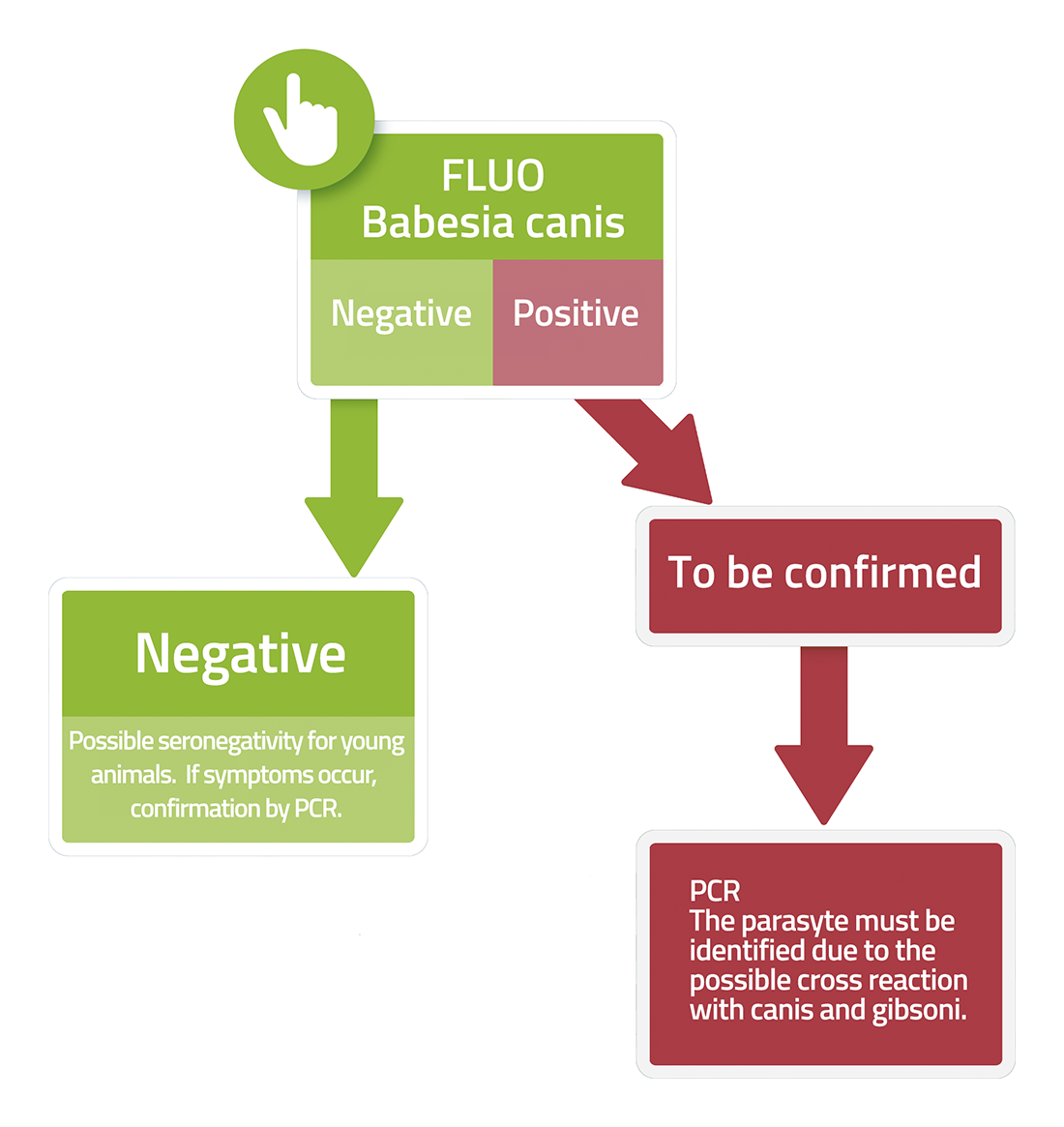FLUO BABESIA canis
IFA kit for the detection of anti-Babesia canis IgG antibodies
Fluo BABESIA canis is a test based on the immunofluorescence technique for the detection of IgG antibodies to Babesia canis in dog serum or plasma samples.
Canine babesiosis (piroplasmosis) is a worldwide tick-borne disease caused by hemoprotozoan parasites of the genus Babesia.
The infected tick transmits piroplasmosis through the bite. All stages of the tick can transmit the disease, not just adult females. Babesia colonizes the red blood cell, destroys it and releases new parasites into the blood which infect other erythrocytes.
After the infection, an important immune response is usually produced, but the immune system is not able to completely eliminate the infection so that infected animals that recover are chronic carriers of the parasite.
Seroprevalence is higher in adult dogs than in those less than 1 year old. Transplacental transmission is possible, and results in wasting or weak puppies.
In dogs, babesiosis can have a hyperacute, acute, chronic or subclinical course, and there are also atypical forms. Acute disease is the most common syndrome, while hyperacute is most rare.
Hyperacute babesiosis
Typical symptoms:
- Disseminated intravascular coagulation (DIC)
- Hypothermia
- Coma
- Death
Acute babesiosis
Typical symptoms:
- Anorexia
- Fever
- Lethargy
- Acute haemolytic anemia
- Thrombocytopenia
- Enlargement of the spleen
- Enlargement of the lymph nodes
- Vomiting
- Jaundice
- Hematuria
Death can occur especially in puppies, but most animals recover from this form.
Chronic Babesiosis
There are little indications of chronic forms. The main symptoms are:
- Intermittent fever
- Decreased appetite
- Loss of weight
Subclinical forms are usually asymptomatic, although still a source of infection.

